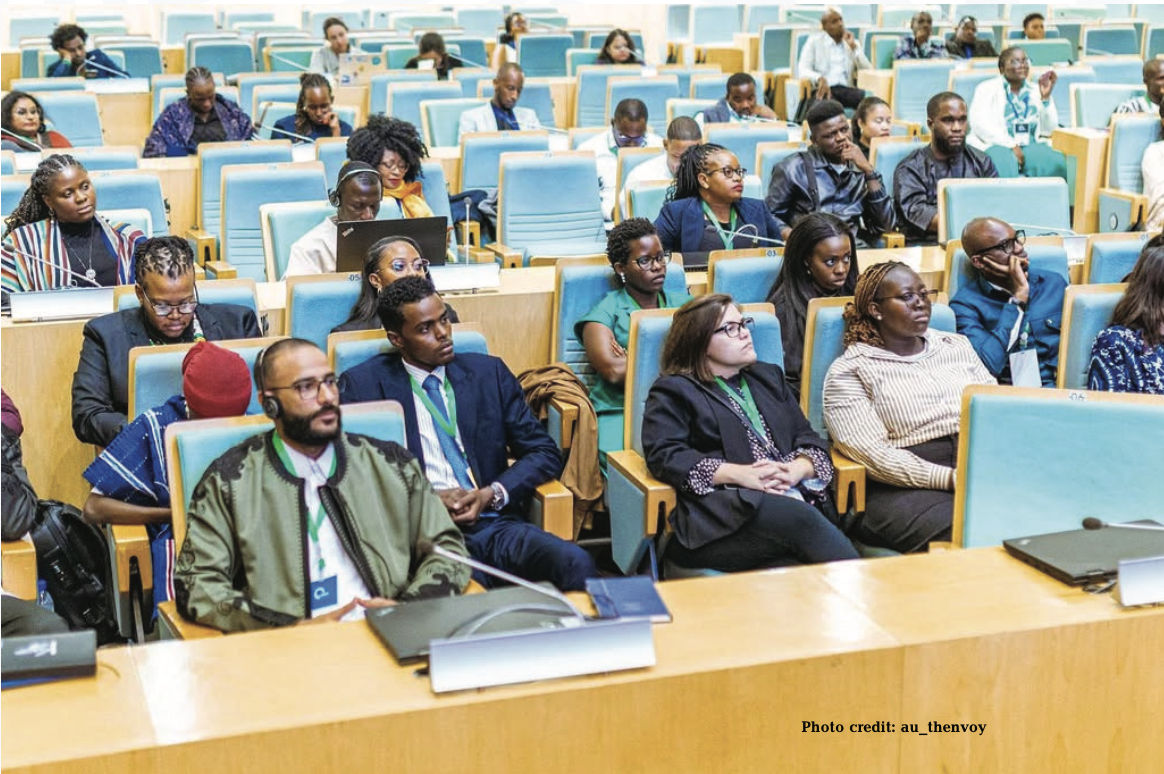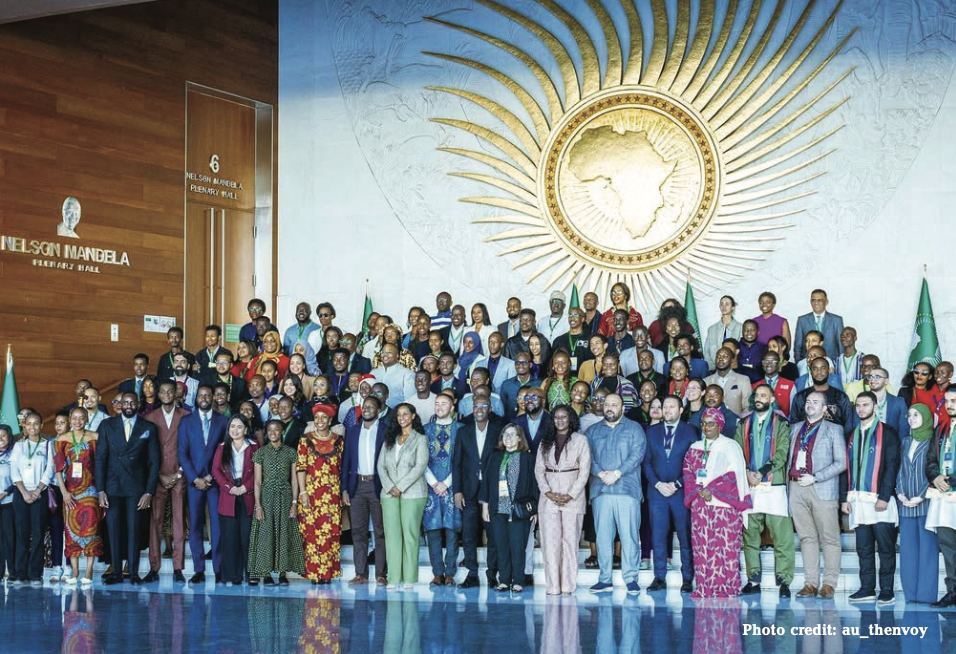
1.0 Introduction
Youth, as defined by the African Union (AU), are individuals aged 15–34, making up 60% of Africa’s population—approximately 453 million people (AU, 2016). Despite this significant demographic strength, young people are often sidelined in formal peacebuilding processes and policymaking. This exclusion is particularly pronounced in Eastern Africa, where youth remain largely absent from peace agreements in conflict-affected countries such as the Democratic Republic of the Congo (DRC), South Sudan, and Somalia (African Union, 2020). The region has long grappled with armed conflict, political instability, and violent extremism, disproportionately affecting young people through displacement, interrupted education, and economic disenfranchisement. These conditions heighten the risk of youth being drawn into armed groups or radical movements. Yet, youth are not merely victims—they are key actors in building peace, fostering resilience, and driving positive social change.

Peacebuilding is the process of supporting societies in transitioning from conflict to peace by strengthening conflict resolution mechanisms and establishing sustainable development foundations (United Nations, 2007). Young people offer innovative, tech-savvy perspectives and are increasingly using digital platforms for civic engagement. For instance, Kenyan youth mobilized effectively through social media to protest the 2024 Finance Bill (KNBS, 2019). Their potential to influence governance, social justice, and reconciliation is immense and underutilized. While global frameworks such as UN Security Council Resolution 2250 (2015) and the African Youth Charter (2006) recognize the importance of youth in peacebuilding, implementation remains limited. Political elites and international actors continue to dominate peace processes, excluding those most affected—youth at the grassroots level.
2.0 Key Issues
2.1 Social and Cultural Barriers

Youth are frequently perceived as perpetrators or victims of violence rather than contributors to peace (ACCORD, 2017). In many societies, longstanding norms and stereotypes portray young people as a threat to stability. For example, Somalia’s clan-based Xeer system privileges elders in decision-making, marginalizing youth despite their potential contributions. These perceptions limit youth participation and reinforce cycles of exclusion and instability. This marginalization perpetuates negative perceptions of youth as either victims or perpetrators of violence, rather than active contributors to peace. As a result, youth remain excluded from peace building efforts, reinforcing cycles of instability and conflict.
2.2 Structural and Security Constraints
Prolonged conflicts in Sudan, Ethiopia, South Sudan, Somalia, and the DRC have created environments where young people are vulnerable to radicalization, recruitment as fighters, or voluntary participation in armed groups—often as a means of survival. In Northern Kenya, historical marginalization and underinvestment have led to disenfranchisement and insecurity (Ajak, 2021). The absence of youth in governance and development exacerbates their alienation.
2.3 Weak Policy Implementation

Although several frameworks support youth involvement in peacebuilding, such as the AU’s Youth, Peace, and Security Agenda and the “Silencing the Guns” initiative, implementation has been inadequate. Many strategies remain top-down and disconnected from youth realities on the ground (Amani Africa, 2024). Without localized and inclusive mechanisms, these policies fail to achieve a sustainable impact. In many cases, these frameworks fail to resonate with local youth, as policies are not adapted to their specific needs or contexts, limiting their impact on peacebuilding and security.
3.0 Conclusion
Unlocking the potential of youth is essential for long-term peace and development in Eastern Africa. Despite systemic exclusion, young people have demonstrated their ability to influence change through activism, grassroots diplomacy, and innovation. Recognizing youth as equal partners in peace processes—not just beneficiaries—requires dismantling entrenched barriers, institutionalizing their inclusion, and ensuring that policies translate into action. With the right support and inclusive policies, the region’s vast youth population offers a demographic dividend that can drive peace, stability, and prosperity. Youth diplomacy must be prioritized to cultivate a new generation of leaders committed to justice, reconciliation, and peaceful coexistence.

4.0 Policy Recommendations
4.1 Break Social and Cultural Barriers
To challenge stereotypes and foster youth legitimacy in peacebuilding, initiatives are required to promote intergenerational dialogue and mentorship programs. Engaging traditional leaders while empowering young people to contribute meaningfully helps shift societal perceptions and supports more inclusive peace processes. For example, in Somalia, initiatives like intergenerational dialogue programs have been used to engage both youth and elders in peacebuilding. These programs help bridge generational gaps, allowing young people to contribute to peace processes while respecting traditional systems. This approach fosters mutual understanding, challenges stereotypes, and promotes youth legitimacy in peacebuilding efforts.
4.2 Address Structural and Security Challenges
Governments and stakeholders must institutionalize youth representation in peace and security forums. Tools such as Kenya’s “Uwiano” Platform demonstrate how digital engagement, through SMS alerts and incident reporting, can enhance youth participation in conflict prevention and resolution mechanisms (NSC, 2022). Scaling similar platforms regionally will amplify youth voices.
4.3 Strengthen Policy Implementation
Countries should adopt robust frameworks for youth participation in peacebuilding. Uganda’s National Youth Council Act offers a useful model for building representation from the grassroots to national levels (Office of the Prime Minister, Uganda, 2022). The Act ensures youth representation from local to national levels, allowing young people to actively participate in policy discussions, including peacebuilding. Adapting such structures across Eastern Africa will promote transparency and empower youth to shape peacebuilding agendas in future.
5.0 References
(2016). State of African Youth Report. Addis Ababa: Africcan Union.
African Union. (2020). African Youth Charter. Addis Ababa: African Union.
African Union. (2020). A Study On The Roles and Contributions of Youth to Peace and Security in Africa. Addis Ababa: African Union.
Akhigbe, A. (2021, April 30). Medium. Retrieved from Medium: https://dppa.medium.com/grassroots-peacebuilding-by-youth-for-youth-and-everyone-9f83195363d4
(2015). Resolution 2250 (2015). New York: United Nations.
African Union. (2020). African Youth Charter. Addis Ababa: African Union.
Ajak, P. B. (2021). African Youth Engaging in Peace and Security. Washington, DC: African Center for Strategic Studies.
Amani Africa. (2024). Memo to the new AU Leadership from the Roaring Guns on AU’s First Decade of Silencing the Guns. Addis Ababa: Amani Africa.
(2015). Resolution 2250. New York: UNSC.
(2017, October 12). Reinvigoration of Somali Traditional Justice through Inclusive Conflict Resolution Approaches. Durban, Durban, South Africa.
(2021). Youth Engagement in Peace Processes in Africa. Durban: ACCORD.
National Steering Committee on Peace Building & Conflict Management. (2022, July 18). National Steering Committee on Peace Building & Conflict Management. Retrieved from National Steering Committee on Peace Building & Conflict Management: https://nscpeace.go.ke/108/
Office of the Prime Minister, Uganda. (2022). Report on Monitoring the Implementation of the National Youth Policy. Kampala: Department of Policy Development and Capacity Building.
United Nations. (2007). Peace, dignity and equality on a healthy planet. New York: United Nations.
Kenya National Bureau of Statistics. (2019). 2019 Kenya Population and Housing Census. Nairobi: Kenya National Bureau of Statistics.
